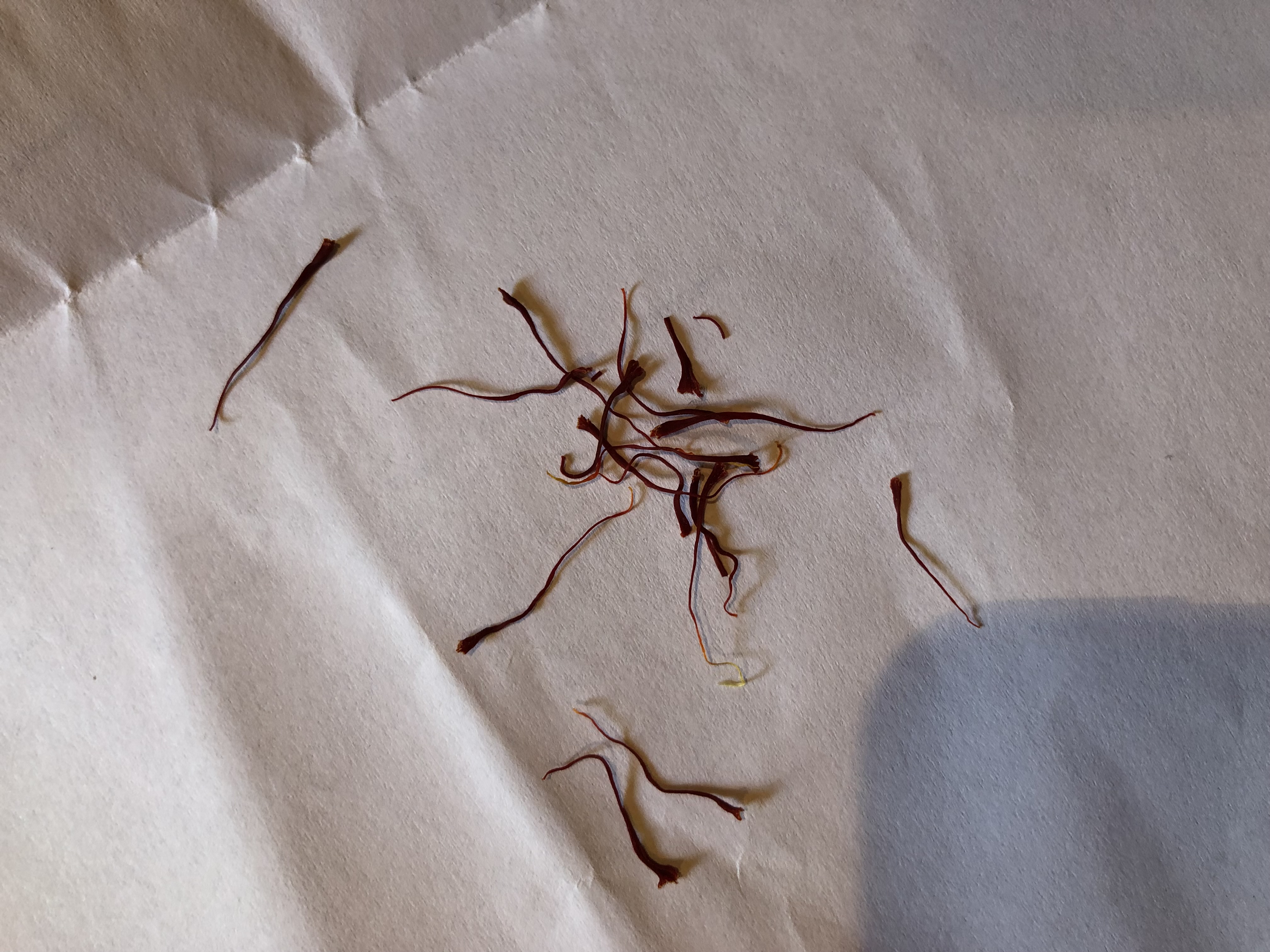The red gold of Upper Valais
Saffron has been cultivated in Mund, in Upper-Valais, since the 14th century. It is the only village in Switzerland where the spice still grows naturally. We examine a family tradition that has endured to this day.
The commune of Mund is situated in the German-speaking part of the canton of Valais, perched at 1,200 metres in altitude. Of its roughly 500 inhabitants, around 100 are saffron growers. The commune is famous for the spice, which it has been growing since the 14th century.
"The writings we've uncovered point to two theories," says Remigius Pfaffen, who is in charge of Mund's Saffron Museum. "The first is that saffron was brought here by pilgrims passing through Switzerland, while the second suggests it was mercenaries who introduced the spice to the country. Both theories agree on one point, though: saffron came to us from Spain, and has grown here naturally ever since."

Remigius Pfaffen was born on an alpine pasture above the village. Though he no longer lives in the commune, he still looks after the saffron field he inherited from his family. He is also a member of Mund's saffron association and fellowship of planters.
A family tradition
The Upper Valais village's 18,000m2 of saffron fields are shared by 120 private growers. "The plots were passed down through families and divided up among the next generation. Back then people had an average of eight to ten children, so the plots are mostly quite small," explains Remigius, who is himself one of eight siblings, and the owner of a 40m2 plot.

Saffron, which the locals often plant alongside rye, nearly disappeared from Mund following the construction in 1951 of the cable car connecting the commune to the valley. "Our ancestors always lived from the land. The rye helped safeguard our bread production, and we're also the only place in the world to combine these two crops," Remigius says. "But industrialisation led many farmers to give up their crops to work in the factory in the valley."
The fellowship of saffron planters was founded in 1979, the year when local production was at its lowest, with only 520m2 of fields being cultivated. Since then, the group has prevented the crop from disappearing and ensured the local expertise acquired over the centuries will continue to be handed down.
Red gold
The saffron plant is part of the crocus genus. It grows from bulbs that are planted in dry and sandy ground in early September. Its purple petals then appear between the end of September and the beginning of November.

Each flower produces three red pistils, which are harvested for consumption. "The pistils are harvested by hand, then dried indoors for two days and placed in vials for one to two weeks while their aroma develops," Remigius explains. "They lose four fifths of their original weight when dried".
Because it takes 130,000 pistils to obtain one kilo of saffron, its price is compared to that of gold.
In Mund we harvest around two kilos of saffron per year, with each planter collecting around 10 to 15 grams annually. A gram of our saffron sells for thirty Swiss francs, but everyone is free to do as they please with their harvest." Remigius gives his harvest to his godchildren as Christmas or birthday presents, while other planters sell theirs commercially. "Traditionally the village would make saffron bread for the end of year festivities and baptisms," he adds. "We no longer have a bakery here, though, so we've passed on the original recipe to a baker in Brig."
An AOP spice
"According to legend," Remigius explains, "saffron grew in places where Zeus had procreated. In ancient times it was used to dye clothes, while in the Middle Ages it was used in medicine. Nowadays saffron is mainly used as a foodstuff."
Mund's grocery store sells saffron cheese and pasta, and even a saffron-based liqueur. It's also served in a number of dishes in the local restaurant, and in 2007 the saffron fellowship and association founded a museum devoted to the spice's local history. Mund saffron received the AOP designation in 2004. "Every year, samples of our dried pistils are taken for analysis," Remigius explains. "Only when this analysis is complete do we receive our AOP labels."

The spice attracts a lot of tourists to Mund, especially during the autumn harvest period.
People come to see the flowers and taste our specialities
Remigius says proudly. "Saffron is part of our identity here in Mund. As a member of the fellowship of planters and of the Saffron association, I notice the interest not only among the public, but also among the younger generations in the village. Our members look after their plots as a family. Maintaining this heritage means working meticulously by hand. It can sometimes be tedious, but it's vital in ensuring the survival of our tradition and crops."
The 2021 saffron harvest will begin shortly – gourmets are well advised to visit the Upper Valais village and sample it for themselves.




